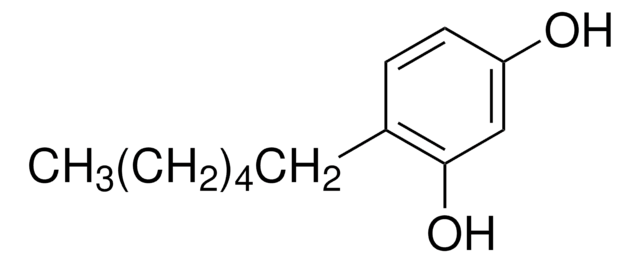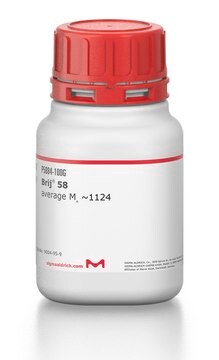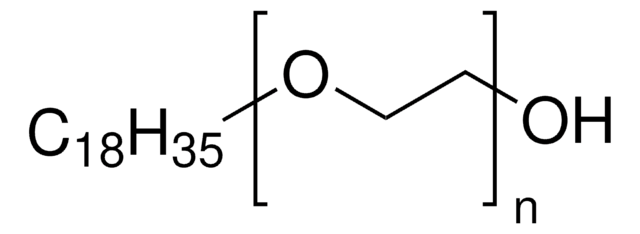Kluczowe dokumenty
235989
Brij® L4
average Mn ~362
Synonim(y):
Polyethylene glycol dodecyl ether, Polyoxyethylene (4) lauryl ether
About This Item
Polecane produkty
opis
non-ionic
Poziom jakości
masa cząsteczkowa
average Mn ~362
współczynnik refrakcji
n20/D 1.451 (lit.)
gęstość
0.95 g/mL at 25 °C (lit.)
HLB
9
ciąg SMILES
CCCCCCCCCCCCOCCOCCOCCOCCO
InChI
1S/C20H42O5/c1-2-3-4-5-6-7-8-9-10-11-13-22-15-17-24-19-20-25-18-16-23-14-12-21/h21H,2-20H2,1H3
Klucz InChI
WPMWEFXCIYCJSA-UHFFFAOYSA-N
Szukasz podobnych produktów? Odwiedź Przewodnik dotyczący porównywania produktów
Powiązane kategorie
Opis ogólny
Zastosowanie
- as a surfactant for the synthesis of copper(I) oxide (Cu2O) spherical nanoparticles using a microemulsion technique
- as a non-ionic surfactant for preparing reverse micelles to synthesize Pt3Co alloy nanoparticles
- as a surfactant to enhance the efficiency of interfacial coupling of hydrophobic materials and to make hydrogel
Działania biochem./fizjol.
Informacje prawne
Hasło ostrzegawcze
Warning
Zwroty wskazujące rodzaj zagrożenia
Zwroty wskazujące środki ostrożności
Klasyfikacja zagrożeń
Acute Tox. 4 Oral - Aquatic Chronic 2 - Eye Irrit. 2 - Skin Irrit. 2
Kod klasy składowania
10 - Combustible liquids
Klasa zagrożenia wodnego (WGK)
WGK 2
Temperatura zapłonu (°F)
Not applicable
Temperatura zapłonu (°C)
Not applicable
Środki ochrony indywidualnej
dust mask type N95 (US), Eyeshields, Gloves
Wybierz jedną z najnowszych wersji:
Masz już ten produkt?
Dokumenty związane z niedawno zakupionymi produktami zostały zamieszczone w Bibliotece dokumentów.
Klienci oglądali również te produkty
Nasz zespół naukowców ma doświadczenie we wszystkich obszarach badań, w tym w naukach przyrodniczych, materiałoznawstwie, syntezie chemicznej, chromatografii, analityce i wielu innych dziedzinach.
Skontaktuj się z zespołem ds. pomocy technicznej










